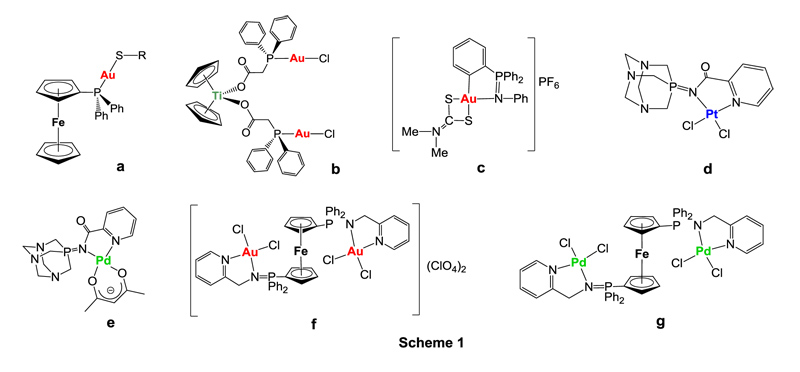[Seminar] Transition metal complexes containing phosphine and iminophosphorane ligands with potential as cancer chemotherapeutics
Maria Contel, Brooklyn College and The Graduate Center, Brooklyn, New York, US
| When |
04 Jul, 2014
from
12:00 pm to 01:00 pm |
|---|---|
| Where | Auditorium |
| Add event to your calendar |
|
Seminar
Title: Transition metal complexes containing phosphine and iminophosphorane ligands with potential as cancer chemotherapeutics: overcoming cisplatin resistance and side effects.
Speaker: Maria Contel
Affiliation: Chemistry Department, Brooklyn College and The Graduate Center, CUNY, Brooklyn, New York, US
Host: Beatriz Royo, Homogeneous Catalysis Lab
Abstract:
This seminar will cover selected examples of metal compounds other than cisplatin with antitumor properties which have undergone clinical trials or advanced preclinical studies. Recent research of our group in the area of medicinal inorganic chemistry will be reported. We have described the preparation, antimicrobial and anticancer activity of monometallic and heterometallic gold(I) derivatives containing phosphines.1-4 Recent work on heterometallic gold(I)-phosphine complexes containing titanocene fragments as potential chemotherapeutic agents for renal cancer (b in Scheme 1) will be highlighted (including in vivo studies).
A different type of phosphorous-based ligands, iminophoshorane or iminophosphine compounds (R3P=N-R’, IM) have been useful precursors in the preparation of coordination (N,N-) or cyclometalated (C,N-) complexes of d8 metals (gold(III), palladium(II) and platinum(II)) mono- or heterometallic (selected compounds c-g in Scheme 1). These IM metal complexes display high cytotoxicity in vitro against a variety of human cancer cell lines.5-10 Organo-gold(III) complexes containing iminophosphorane ligands (e.g. c) exert cell death with pathways involving mitochondrial production of ROS.5,6 We have studied the interaction of the IM metal compounds with (pBR322) DNA and HSA.7-10 We have studied the inhibition of PARP-1 proteins by selected compounds (f, g).9 In some cases (including Pd(II) and Pt(II) derivatives) we have demonstrated that DNA is not the target for these compounds and that the compounds are highly active against cisplatin-resistant cancer cell lines (such as Jurkat sh-Bak or A2780cisR) pointing out to a mode of action different from that of cisplatin. Our most recent results on ruthenium(II) derivatives containing iminophosphorane ligands as potential chemotherapeutics for breast cancer (including in vivo studies) will be described .
[1] Contel et al. Eur. J. Inorg. Chem. 2009, 3421. [2] Contel et al. Inorg. Chem. 2011, 50, 11099. [3] Contel et al. Chem. A. Eur. J. 2012, 18, 3659. [4] Contel et al. J. Inorg. Biochem. 2014, DOI: 10.1016/j.jinorgbio.2014.05.008. [5] Contel et al. Inorg. Chem. 2009, 48, 1577. [6] Contel, Marzo et al. J. Inorg. Biochem. 2011, 105, 1306. [7] Contel et al. J. Inorg. Biochem. 2012, 116, 204. [8] Contel et al. Organometallics 2012, 31, 5772. [9] Contel, Casini et al. J. Med. Chem. 2013, 56, 5806. [10] Contel, Casini et al. Inorg. Chem. Front. 2014, 1, 231.









